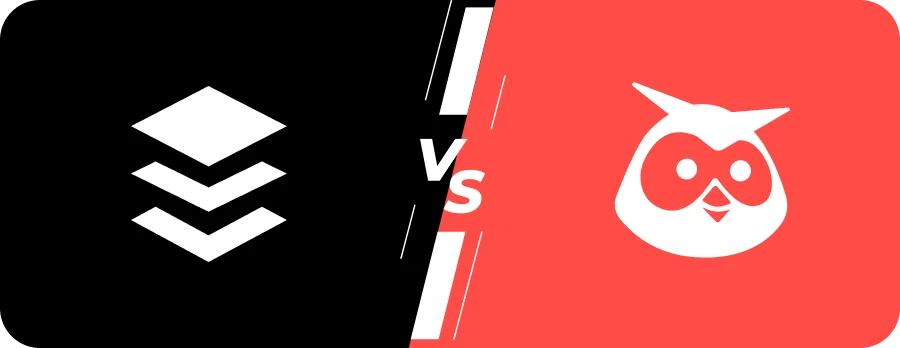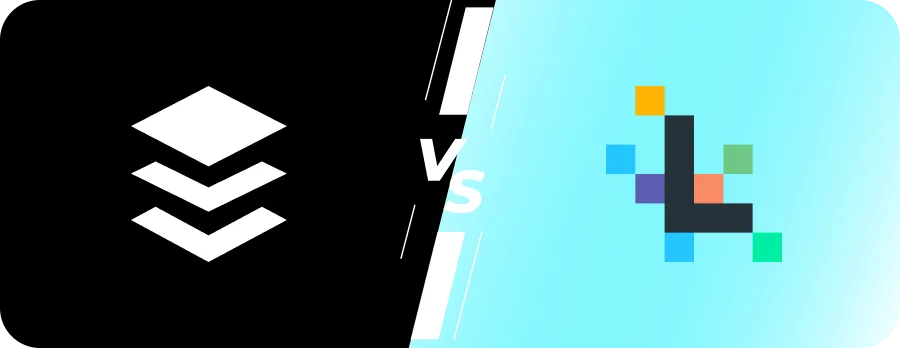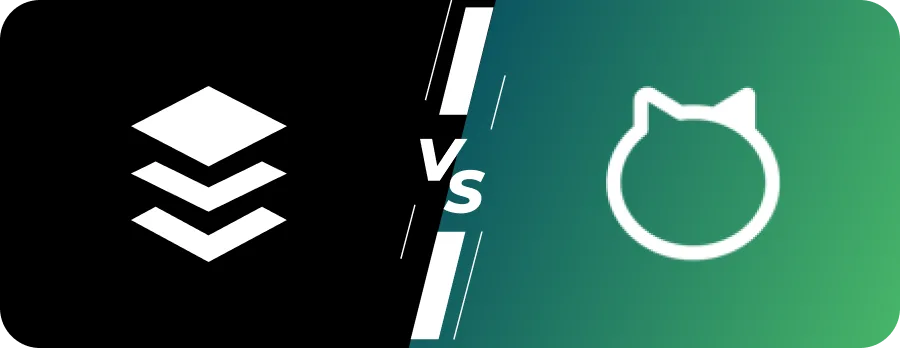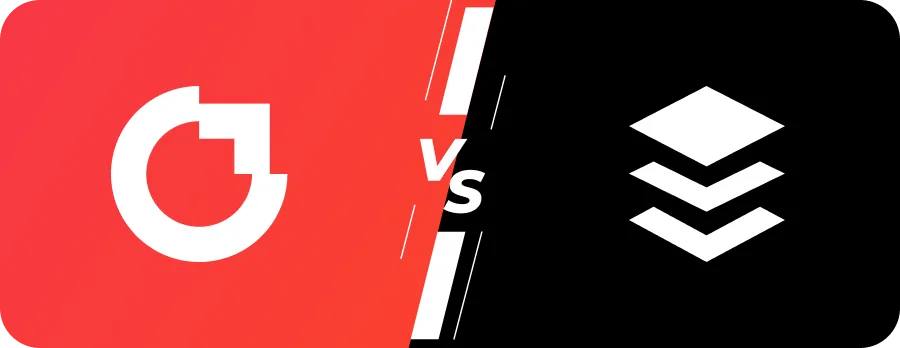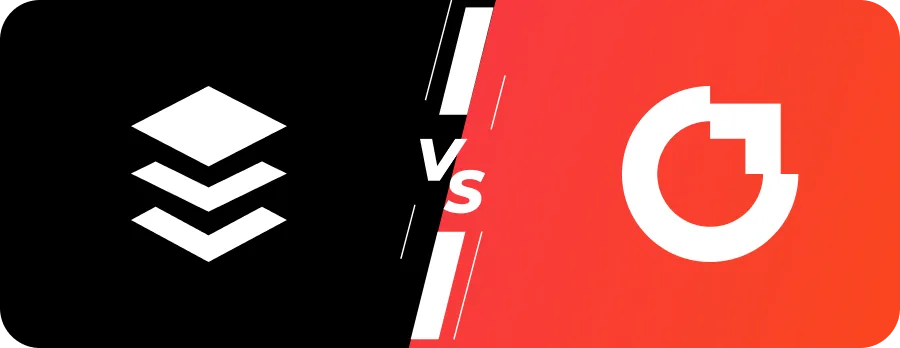
Buffer vs Crowdfire
Which Platform Is Better in 2025?
Buffer
Founded in 2010 by Joel Gascoigne, Buffer began as a tool to schedule tweets and has since evolved into a comprehensive social media management platform. Its mission is to help users build their brand and grow their business through organic marketing strategies.
Best suited for:
Buffer is best suited for small businesses, creators, and individuals seeking to enhance their social media presence through organic marketing strategies. Its user-friendly interface and focus on transparency make it particularly appealing to those who value straightforward tools and open company practices.
Crowdfire
Established in 2010 as “JustUnfollow,” Crowdfire rebranded in 2015 to its current name. The platform offers a suite of tools to help users discover and schedule content, manage social accounts, and grow their online presence.
Best suited for:
Crowdfire caters to a broad audience, from small businesses and individual users to large enterprises. Its advanced analytics and integrations make it ideal for organizations that require a comprehensive social media management platform with robust tracking capabilities.
Overview
In the dynamic world of social media, effectively managing multiple social media accounts is crucial for maintaining a strong online presence. As an experienced social media manager who has extensively tested both Buffer and Crowdfire, I’ve evaluated their features, pricing, customer feedback, and more to help you determine which social media management tool best aligns with your unique needs. Whether you’re a solo entrepreneur, a small business, or part of a large social media team, understanding the nuances of these platforms is essential for effective content creation and management.
Buffer vs Crowdfire: User Rating
| Rating Categories | Buffer | Crowdfire |
| Star Rating (Out of 5) | 4.5 | 4.3 |
| Meets Requirements (Out of 10) | 8.7 | 8.4 |
| Ease of Use (Out of 10) | 9.2 | 8.9 |
| Ease of Setup (Out of 10) | 9.0 | 8.8 |
| Ease of Admin (Out of 10) | 8.9 | 8.7 |
| Quality of Support (Out of 10) | 8.8 | 8.6 |
| Business Partnership (Out of 10) | 8.6 | 8.4 |
| Product Direction (% positive) | 8.7 | 8.5 |
Both tools boast strong reputations on review platforms like G2 and Capterra. Buffer often edges out in terms of simplicity and user-friendly design, while Crowdfire is lauded for its comprehensive feature set tailored to content discovery and engagement.
Both tools receive positive feedback, but Buffer is favored for its straightforward approach and ease of use, making it ideal for users prioritizing simplicity. Crowdfire excels in content curation and engagement features, making it the go-to choice for those who need advanced tools for content discovery and audience interaction.
Buffer vs Crowdfire: Feature Comparison
| Features | Buffer | Crowdfire |
| Pricing (per month in USD) | 15$ | 9.99$ |
| Free Trial | Yes | Yes |
| Platforms Supported | Most Major Platforms | All Major Platforms |
| Bulk Scheduling | Yes | Yes |
| RSS feeds | No | Yes |
| Content Suggestions | No | Yes |
| Social Inbox | No | No |
| Advanced Analytics | Yes | Yes |
| Approval Workflow | No | No |
| URL Shortener | Yes | Yes |
| Team Management | Yes | Yes |
Pricing Comparison
When selecting social media management tools, pricing is often a decisive factor. Buffer offers a straightforward pricing structure with plans catering to individuals, small businesses, and larger teams. Their free plan allows users to manage up to three social profiles with basic scheduling features, making it ideal for those just starting out. The Pro and Premium plans provide increased capabilities, including unlimited users and advanced analytics, at competitive monthly rates.
Crowdfire, on the other hand, offers a free plan that supports up to one account per platform and includes essential features like content scheduling and basic analytics. Their Plus, Pro, and Premier plans scale up in price and functionality, providing options for agencies and larger businesses managing multiple clients.
If budget is a primary concern and you’re a small business or agency, Crowdfire offers flexible pricing options with scalable plans suitable for growing needs. For solo entrepreneurs or those just starting out, Buffer’s free plan is an excellent choice. For larger organizations willing to invest in a premium tool for advanced features, Buffer provides excellent value with its robust team plans and comprehensive feature set.
a. Scheduling and Automation
Efficient scheduling and publishing are fundamental to any social media strategy. Buffer excels with its content calendar that offers a clear, visual overview of your posting schedule, enabling precise planning and coordination across multiple social media platforms. It supports bulk scheduling and provides options to categorize posts, making it easier to manage diverse content streams.
Crowdfire emphasizes content creation and discovery alongside scheduling. Its smart scheduling feature optimizes post times based on audience engagement data, and the platform allows users to easily schedule posts from its content discovery tools, streamlining the entire content management process.
Both platforms offer robust scheduling tools, but Crowdfire’s integrated content discovery and smart scheduling provide an edge for users looking to optimize post timings and streamline content creation. Buffer remains a solid choice for those prioritizing simplicity and reliability in scheduling.
b. Supported Social Media Platforms
Supporting a diverse range of social media channels is essential for comprehensive management. Buffer supports major platforms such as Facebook, Twitter, Instagram, LinkedIn, and Pinterest, ensuring broad coverage for most businesses.
Crowdfire not only covers these primary networks but also extends support to emerging platforms like TikTok and Google My Business, providing an edge for businesses targeting these newer channels. This broader channel support makes Crowdfire a flexible choice for those looking to expand their social media presence across a wider variety of social networks.
Both tools offer robust channel support, but Crowdfire’s inclusion of emerging platforms like TikTok provides additional flexibility for businesses aiming to diversify their social media presence.
c. Analytics and Reporting
Comprehensive analytics and reporting are essential for measuring the success of your social media efforts. Buffer provides detailed analytics that track engagement metrics, follower growth, and post performance. You can generate customizable reports to showcase key performance indicators (KPIs) relevant to your business goals.
Crowdfire offers robust analytics, focusing on metrics such as post performance, audience demographics, and engagement rates. Additionally, Crowdfire’s social listening features provide deeper insights into audience behavior and competitor activities, enhancing your ability to track ROI and adjust strategies accordingly.
For businesses requiring straightforward and customizable analytics, Buffer is the superior choice. If you need in-depth insights and advanced social listening capabilities, Crowdfire offers more comprehensive analytics tools that can drive data-driven decision-making.
d. User Interface and Experience
Buffer offers a clean and intuitive user interface, designed for simplicity and ease of use. Users can efficiently schedule and publish posts across multiple social media platforms through a straightforward dashboard. The platform’s design emphasizes transparency and user-friendliness, making it accessible even for those new to social media management tools.
Crowdfire features a modern and user-friendly interface, focusing on simplifying social media management tasks. The platform’s design is clean and inviting, with a focus on providing a hassle-free experience for users of all skill levels. Moving through the platform feels like a casual stroll in the park, thanks to its intuitive design and clear, concise instructions.
Pros and Cons of Using Buffer
Pros
- Ease of Use: Buffer is known for its user-friendly interface, making it ideal for individuals and small businesses looking for an intuitive social media management tool.
- Affordable Pricing: Offers competitive pricing plans, including a free option, which is beneficial for startups and solo entrepreneurs.
- Effective Scheduling: Buffer excels in scheduling posts across multiple platforms, providing a clear content calendar and the ability to queue posts effortlessly.
- Transparent Analytics: Provides basic analytics on post performance, which is useful for tracking engagement and improving content strategies.
- Multi-Platform Support: Supports major social media platforms like Facebook, Instagram, Twitter, LinkedIn, and Pinterest.
Cons
- Limited Advanced Features: Lacks some of the more sophisticated features found in higher-end tools like social listening or advanced reporting.
- Basic Analytics: While it offers useful insights, Buffer’s analytics are more basic, and advanced reporting is only available in higher-tier plans.
- Limited Integration Options: Buffer has fewer integrations with third-party tools compared to some competitors.
- No Unified Social Inbox: Unlike some competitors, Buffer doesn’t offer a central hub to manage direct messages and comments from all social platforms in one place.
Pros and Cons of Using Crowdfire
Pros
- Comprehensive Content Discovery: Crowdfire offers powerful content discovery features, recommending articles and posts that can be shared on your social channels to boost engagement.
- Automation & Scheduling: Similar to Buffer, Crowdfire enables you to schedule posts ahead of time and automate repetitive tasks.
- Hashtag Recommendations: Suggest trending hashtags to increase the visibility of your posts, making it a valuable tool for expanding your reach.
- Integration with eCommerce: Crowdfire supports integration with Shopify and other eCommerce platforms, making it an excellent choice for businesses focused on online retail.
- Affordable Pricing: Offers a variety of plans, including a free version, making it accessible to small businesses and freelancers.
Cons
- Learning Curve: Crowdfire’s interface can feel overwhelming at first, with many features that require some time to learn and fully utilize.
- Limited Analytics in Lower Tiers: Like Buffer, some of the more advanced analytics features are locked behind higher-tier plans.
- Fewer Platforms Supported: Crowdfire supports fewer social media platforms than competitors like Hootsuite, which may limit its usefulness for businesses with diverse social media needs.
- Ad Hoc Features: Some advanced features, like content curation or scheduling, can feel scattered across different parts of the platform, creating a less seamless user experience.
Ideal Use Cases
Buffer is best suited for small businesses, content creators, and solo entrepreneurs who prioritize simplicity and cost-effectiveness in their social media management tools.
Crowdfire is a great choice for eCommerce businesses, social media managers, and agencies who need content discovery features, robust analytics, and advanced tools for driving engagement and managing multiple social media accounts.
Conclusion of Buffer vs. Hootsuite Comparison
Selecting the right social media management tool depends on your specific requirements and the scale of your operations. Buffer offers a user-friendly platform with reliable scheduling, robust analytics, and excellent customer support, making it suitable for solo entrepreneurs, small businesses, and growing teams. Crowdfire, with its advanced content curation, comprehensive social listening features, and extensive channel support, is an excellent choice for businesses seeking a more holistic approach to social media management.
Additionally, RecurPost emerges as a compelling alternative, especially for those prioritizing affordability and ease of use. Its effective content scheduling and reposting features make it ideal for small businesses, solo entrepreneurs, and agencies managing multiple clients without the need for highly advanced functionalities.
